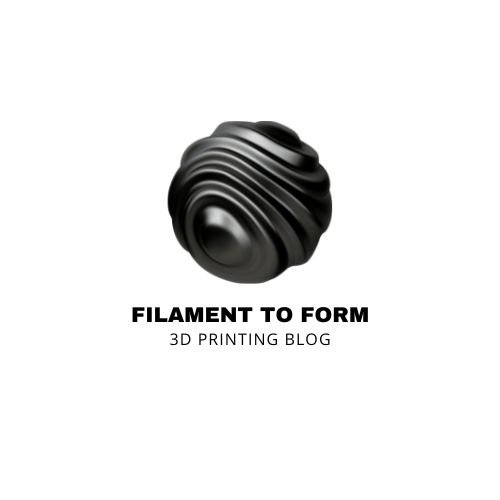When you’re soldering regularly, toxic fumes aren’t just an annoyance—they’re a serious health hazard that can compromise your respiratory system over time. You need proper ventilation that’ll actually capture those harmful particles before they reach your lungs. The market’s flooded with options claiming to solve this problem, but only a select few deliver the performance and reliability your workspace demands. Here’s what separates the truly effective solutions from the disappointing alternatives.
FumeClear Solder Fume Extractor – 100W Suction with 3-Stage Filtration
If you’re working with electronics or small soldering projects on your workbench, the FumeClear Solder Fume Extractor’s 3-stage filtration system captures 99.97% of harmful particles below 0.3 microns while maintaining whisper-quiet operation at just 50 dB. You’ll get 200 m³/h suction power with a 47-inch flexible hose that positions precisely where you need it. The high-iodine activated carbon filter lasts up to 3000 hours, and you’ll receive 10 pre-filters included. While it’s perfect for bench soldering, you’ll need larger models for extensive equipment. The unit’s compact 19.86-pound design fits easily on workbenches without taking up excessive space.
Best For: Electronics enthusiasts and professionals who need effective fume extraction for small bench soldering projects and want a quiet, compact solution with high-efficiency filtration.
Pros:
- Highly effective 3-stage filtration system that captures 99.97% of harmful particles below 0.3 microns
- Quiet operation at only 50 dB with strong 200 m³/h suction power and long 47-inch flexible hose
- Durable design with long-lasting carbon filter (up to 3000 hours) and includes 10 pre-filters
Cons:
- Not suitable for larger equipment like laser engravers or extensive industrial applications
- Replacement filters are expensive at approximately $90
- Some users find the power on/off beep noise annoying
FumeClear FC2001A Solder Fume Extractor
The FumeClear FC2001A’s high-speed brushless motor and 99.97% filtration efficiency make it the perfect choice for electronics professionals who need reliable solder fume extraction during extended work sessions. You’ll get superior suction power from 120 to 180m³/h with 3-speed adjustment capabilities. The coconut shell activated carbon filter features an 600-800mg/g iodine value for exceptional deodorizing performance. Its durable sheet metal construction guarantees stability during prolonged use, while dual voltage compatibility (110V/220V) makes it versatile for any workspace. You’re covered by CE, ROHS, FCC, and UL certifications plus 24/7 engineering support.
Best For: Electronics professionals and hobbyists who need reliable, high-efficiency solder fume extraction during extended work sessions in various workspace environments.
Pros:
- High-efficiency filtration system with 99.97% deodorizing capability using coconut shell activated carbon filter
- Superior suction power (120-180m³/h) with 3-speed adjustment and energy-efficient brushless motor technology
- Dual voltage compatibility (110V/220V) with comprehensive certifications and 24/7 engineering support
Cons:
- Higher initial cost compared to basic fume extractors due to advanced brushless motor and filtration technology
- Replacement filters may be more expensive given the specialized coconut shell activated carbon requirements
- May be oversized for occasional hobbyist use who only solder infrequently
YIHUA 948DQ-I Solder Fume Extractor Fan with 8 Extra Filters
Small-scale electronics enthusiasts and hobbyist woodworkers will find the YIHUA 948DQ-I Solder Fume Extractor particularly well-suited for their workspace needs. You’ll benefit from its dual-filtering system that captures harmful particles within 10 cm effectively. The 30° tiltable stand lets you adjust filtering areas based on your project requirements, while included fenders reduce disruptive airflows for better extraction efficiency.
At 2.48 pounds and 5 watts, it’s compact yet powerful enough for most hobbyist applications. You’ll appreciate the 5-blade fan’s relatively quiet operation and minimal maintenance requirements. With 4.4 stars from 287 users and #2 ranking in its category, it’s proven reliable for small-scale fume extraction tasks.
Best For: Small-scale electronics enthusiasts and hobbyist woodworkers who need effective fume extraction for soldering and wood burning projects in compact workspaces.
Pros:
- Dual-filtering system with front and rear filtration adsorbers effectively captures harmful particles within 10 cm range
- Compact and lightweight design (2.48 pounds) with adjustable 30° tiltable stand and included fenders for customizable positioning
- Low power consumption (5 watts) with relatively quiet 5-blade fan operation and minimal maintenance requirements
Cons:
- Limited effective range of only 10 cm from the filter, requiring close positioning to work area
- Noise levels and filtering effectiveness can vary depending on solder type and distance from the extractor
- May not be powerful enough for larger-scale or professional soldering operations
KOTTO Solder Smoke Absorber Fume Extractor for Soldering Station
Professional electronics technicians and hobbyist solderers will find the KOTTO Solder Smoke Absorber delivers targeted fume extraction with its powerful 3000 RPM fan that effectively captures harmful vapors from 8-12 inches away. You’ll appreciate its 0.4-inch thick activated carbon filter that traps solder fumes, flux chemicals, and gases while operating quietly. The compact 3x5x5-inch unit features durable metal construction with non-slip rubber feet and a convenient carrying handle. At 2.16 pounds, it’s highly portable for various workspaces. You’ll benefit from the included replacement filter, 30-day satisfaction guarantee, and US-based customer support for reliable performance.
Best For: Professional electronics technicians and hobbyist solderers who need effective fume extraction in compact workspaces and value portability with reliable performance.
Pros:
- Powerful 3000 RPM fan effectively captures fumes from 8-12 inches away with quiet operation
- Durable metal construction with non-slip rubber feet and portable 2.16-pound design with carrying handle
- Includes thick 0.4-inch activated carbon filter plus replacement filter with 30-day satisfaction guarantee
Cons:
- Does not vent smoke outside, only filters it through the carbon system
- Lacks fan speed control options to adjust noise levels and suction power
- Limited temperature range of -20℃ to 60℃ may restrict use in extreme environments
KQZ-W1 Solder Fume Extractor with H13 HEPA Filter
With its impressive 168 m³/h air volume and dual-layer filtration system, the KQZ-W1 Solder Fume Extractor stands out as an ideal choice for professionals working in 3D printing studios, welding workshops, and electronic repair facilities who need reliable protection from harmful airborne contaminants. You’ll appreciate its H13 HEPA filter that captures 99.99% of pollutants, including heavy metals like lead and mercury. The device’s 66mm swan neck hose adjusts 360° for precise positioning, while its compact design saves workspace. Built with aviation-grade metal alloy, it’s durable and corrosion-resistant, supporting 110V-220V operation.
Best For: Professionals in 3D printing studios, welding workshops, and electronic repair facilities who need reliable protection from harmful fumes and airborne contaminants during soldering and welding tasks.
Pros:
- High-efficiency dual-layer filtration system with H13 HEPA filter captures 99.99% of pollutants including heavy metals like lead and mercury
- Flexible 360° adjustable swan neck hose allows precise positioning for optimal fume capture at various working angles
- Durable aviation-grade metal alloy construction with wide voltage compatibility (110V-220V) ensures long-lasting performance and stable operation
Cons:
- Compact design may limit air volume capacity for larger workspaces or heavy-duty industrial applications
- Pre-filters and HEPA filters require regular replacement which adds to ongoing operational costs
- Single-button operation may lack advanced controls or customization options for specific extraction needs
Factors to Consider When Choosing Ventilation Solutions for Fume Extraction
When you’re selecting a ventilation solution for fume extraction, you’ll need to evaluate several critical factors that directly impact performance and cost-effectiveness. Your choice should balance suction power requirements with filtration system efficiency while considering how noise levels will affect your work environment. You’ll also want to guarantee the system’s capacity matches your workspace size and that energy consumption aligns with your operational budget.
Suction Power Requirements
Suction power serves as the foundation of any effective fume extraction system, determining how well your ventilation solution captures and removes harmful particles from your workspace. You’ll typically see this measured in cubic meters per hour (m³/h), with higher values indicating superior performance. For small soldering applications, you’ll need at least 100 m³/h to guarantee adequate removal of dangerous gases.
Consider extractors with adjustable suction settings—they’ll give you flexibility to match different soldering tasks and materials. Position your unit as close as possible to the fume source for maximum efficiency. However, don’t overlook noise levels measured in decibels, since higher suction power often means increased operational noise that could disrupt your working environment.
Filtration System Efficiency
Filtration efficiency determines whether your fume extraction system actually protects your health or merely moves contaminated air around your workspace. You’ll need a high-efficiency system capturing at least 99.97% of harmful gases and particles below 0.3 microns for effective protection.
A multi-layer approach works best—combine pre-filters with activated carbon filters to handle larger dust particles and odors. Choose activated carbon filters with high iodine values between 600-800 mg/g for superior adsorption capabilities and better deodorization.
Consider operational costs when selecting filters. Some HEPA and activated carbon filters last up to 3000 hours, reducing maintenance expenses. Remember that positioning matters—place your extractor within 5-10 cm of the fume source for ideal filtration performance.
Noise Level Considerations
Although effective fume extraction requires powerful suction, you’ll want to balance performance with noise levels to maintain a comfortable working environment. Higher suction power typically increases noise, so consider models operating around 50 dB—similar to quiet conversation levels. Choose extractors with brushless motors, which deliver better energy efficiency while reducing operational noise compared to traditional motors.
Position your extractor strategically, as proximity to fume sources affects both performance and sound disturbance. You’ll find that careful placement optimizes extraction while minimizing noise impact on your workspace. Look for models with adjustable fan speeds, allowing you to control noise levels while maintaining effective fume removal. This flexibility lets you adapt to different tasks and working conditions without compromising either safety or comfort.
Workspace Size Compatibility
Beyond noise considerations, your workspace dimensions play a major role in determining the right fume extractor for your needs. Larger areas require units with higher cubic meters per hour (m³/h) ratings to achieve adequate air purification and prevent toxic fume accumulation. You’ll need devices with greater suction power and air change rates to effectively cover expansive spaces.
For smaller work areas, you can use compact extractors with lower suction power, but positioning them near the fume source is essential. The effectiveness of fume extraction decreases markedly with distance, so understanding proximity requirements helps you select the appropriate model.
If your space is particularly large, consider installing multiple units or investing in a more powerful single model for thorough coverage.
Energy Consumption Factors
When selecting a fume extractor, you’ll want to evaluate energy consumption carefully since it directly impacts your operational costs and environmental footprint. Smaller units typically consume 5 watts while industrial-grade models can exceed 100 watts. Higher suction power increases energy use – a unit with 200 m³/h CADR consumes more than one with 120 m³/h CADR.
You’ll benefit from choosing brushless motors over traditional ones since they’re more energy-efficient and minimize mechanical losses. Consider voltage compatibility too; devices with voltage inverter technology adapt to varying power supplies without energy wastage. Don’t overlook filter lifespan – frequent replacements increase overall costs and energy usage from manufacturing and shipping new filters, making longer-lasting filters more economical.
Maintenance Cost Analysis
Since maintenance represents a significant portion of your fume extractor’s total cost of ownership, you’ll need to analyze several key expense categories before making your selection. Filter replacement costs vary dramatically, ranging from $90 for high-efficiency filters down to lower-cost standard options. You’ll save money long-term by choosing filters rated for extended operational lifespans, such as 3000-hour models that reduce replacement frequency.
While higher initial purchase prices might seem intimidating, durable filtration systems often offset these costs through reduced maintenance expenses. You’ll also need to factor in regular cleaning requirements and component servicing. Systems with higher airflow rates or those operating in demanding environments typically require more frequent maintenance, increasing your ongoing operational costs throughout the equipment’s lifespan.
Frequently Asked Questions
How Often Should I Replace Filters in My Fume Extraction System?
You should replace filters every 3-6 months depending on usage frequency and contamination levels. Check manufacturer guidelines, monitor pressure drops, and inspect filters monthly for visible damage or clogging to maintain peak performance.
What Health Risks Are Associated With Prolonged Exposure to Soldering Fumes?
You’ll face respiratory irritation, headaches, and dizziness from soldering fumes. Long-term exposure can damage your lungs, nervous system, and cause metal poisoning from lead, flux chemicals, and other toxic substances released during soldering.
Can Portable Fume Extractors Work Effectively in Large Workshop Spaces?
You’ll find portable fume extractors less effective in large workshops since they can’t capture fumes from multiple workstations simultaneously. You’ll need strategic placement near each work area or consider upgrading to centralized ventilation systems.
Do I Need Professional Installation for Industrial-Grade Ventilation Systems?
You’ll need professional installation for industrial-grade ventilation systems. These complex systems require proper ductwork design, electrical connections, and safety compliance that only certified technicians can handle correctly and safely.
Are There Specific Safety Regulations for Workplace Fume Extraction Requirements?
You’ll need to comply with OSHA standards, EPA regulations, and local building codes that specify ventilation rates, air quality limits, and equipment requirements. Your industry may have additional safety standards you’re required to follow.





Leave a Reply